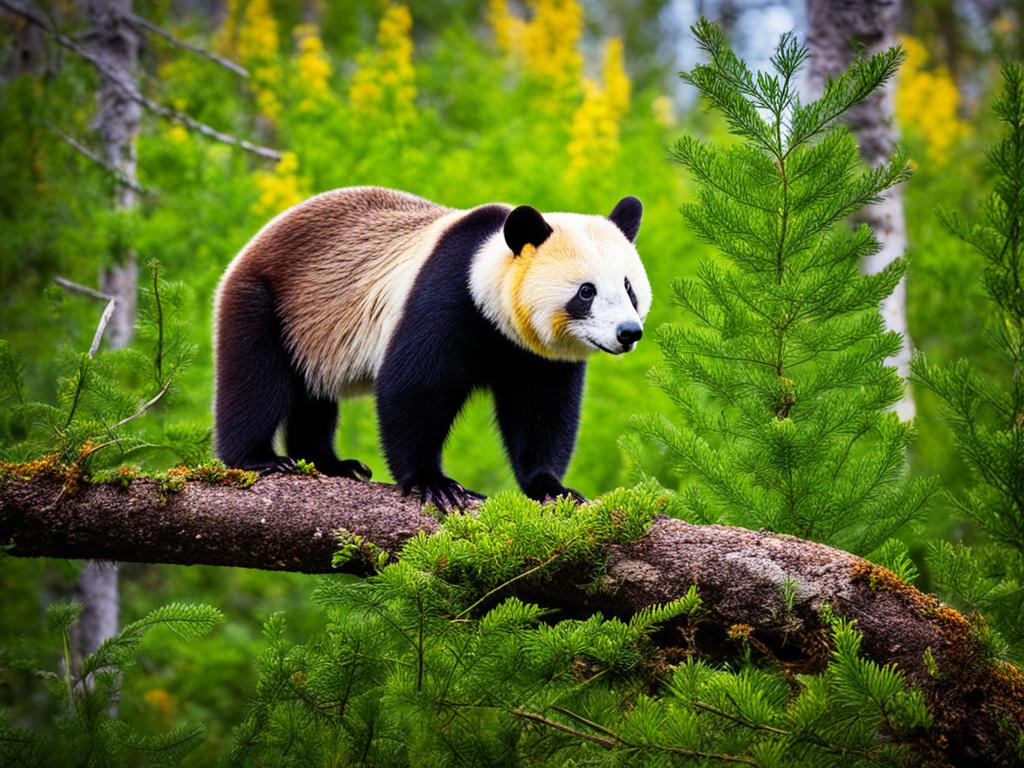Keystone species are key parts of ecosystems. They play vital roles in keeping ecological niches healthy. They also help increase biodiversity. Their impact is so big that they can control the well-being of ecosystems. Without them, ecosystems might fail.
These species keep balance in nature. They support many other life forms. By doing so, keystone species make sure everything in nature is connected. Their actions create habitats, manage animal numbers, and keep life’s web strong. They are crucial for ecosystem balance.
Key Takeaways
- Keystone species are key to healthy ecological niches.
- They play a big part in biodiversity.
- These species deeply affect environmental balance.
- They help control natural relationships.
- Conservation efforts often focus on them because of their big impact.
What Are Keystone Species?
Keystone species are vital to their ecosystems. They help keep everything in balance. Even with small numbers, they have a big impact on other species and the whole ecosystem.

Definition and Characteristics
These species have a unique power. They can shape their environments more than their size would suggest. They are key players in their ecosystems, affecting other species and environmental structures. They usually have a small population but a large ecological effect. They help structure communities and control the population of other organisms.
Identifying keystone species means looking at their roles. We see how they influence ecosystems. And we understand the big changes that follow if they were gone.
Examples of Keystone Species
Let’s look at some examples:
| Species | Role in Ecosystem | Threatened Status |
|---|---|---|
| Sea Otters | Sea otters protect kelp forests by eating sea urchins, which would otherwise destroy these areas. | Threatened |
| Beavers | Beavers build dams, creating wetlands. These areas are vital for many species. | Not Threatened |
| Wolves | Wolves keep the number of large herbivores in check. This helps keep the vegetation and ecosystem healthy. | Threatened |
These cases show how crucial keystone species are. They underline why we must protect them. Doing so maintains biodiversity and ecosystem health.
The Ecological Importance of Keystone Species
Keystone species play a crucial role in their environments. They keep everything in balance, supporting many other species. Their actions help ensure the survival and flourishing of various life forms.
Maintaining Biodiversity
Keystone species are key to biodiversity. They support a wide range of plants and animals. This makes ecosystems strong and able to cope with changes.

Regulating Species Populations
They also keep animal numbers in check. By hunting, competing, and partnering with others, they stop any one group from taking over. This balance allows many different creatures to thrive.
| Ecological Role | Impact on Ecosystem |
|---|---|
| Population Control | Maintains balance by controlling species overpopulation. |
| Species Diversity | Enhances ecosystem resilience through a variety of species. |
| Biodiversity Conservation | Ensures the survival of a wide range of organisms. |
In summary, keystone species are vital for healthy ecosystems. They help maintain biodiversity and keep populations balanced. Protecting them is crucial for our planet’s future.
The Role of Keystone Species in Ecosystems
Keystone species, like keystone predators, play a crucial role in their environments. They help keep the ecological balance by controlling the populations they hunt. This often starts trophic cascades that ripple through their ecosystem. Such cascades can impact different layers of the food web.

Trophic Cascades
Trophic cascades show the powerful impact of keystone predators. Take the gray wolf in Yellowstone, for example. When reintroduced, it drastically changes the number and behavior of other species. This can decrease too many herbivores, help plants grow back, and bring back a balanced ecosystem.
But if these key predators are removed, prey numbers can grow too much. This often leads to too much grazing and can hurt the habitat.
Influence on Habitat Structure
The effect of keystone species on habitat structure is also big. By keeping prey numbers in check, keystone predators support diverse and stable ecosystems. For instance, sea otters control sea urchin populations to protect kelp forests. These forests are essential for many marine animals.
If keystone species decline or vanish, it can cause big changes. Not only the habitat’s physical structure changes, but also the ecological balance and health of the whole ecosystem.
Predator-Prey Dynamics and Keystone Species
The dance between predators and their prey is key to many ecosystems. Keystone species are crucial in this balance. They help make sure no species takes over, which could harm the ecosystem.
Gray wolves in Yellowstone are a great example of this balance. When they were brought back in the 1990s, they helped control elk numbers. This allowed plants to grow back and helped other animals thrive. This shows how important keystone species are.
Keystone species are needed for nature’s balance, according to ecology. Apex predators keep prey in check, helping the whole food chain. Without them, too many herbivores can harm the environment. So, it’s vital to protect these key species for nature’s health.


